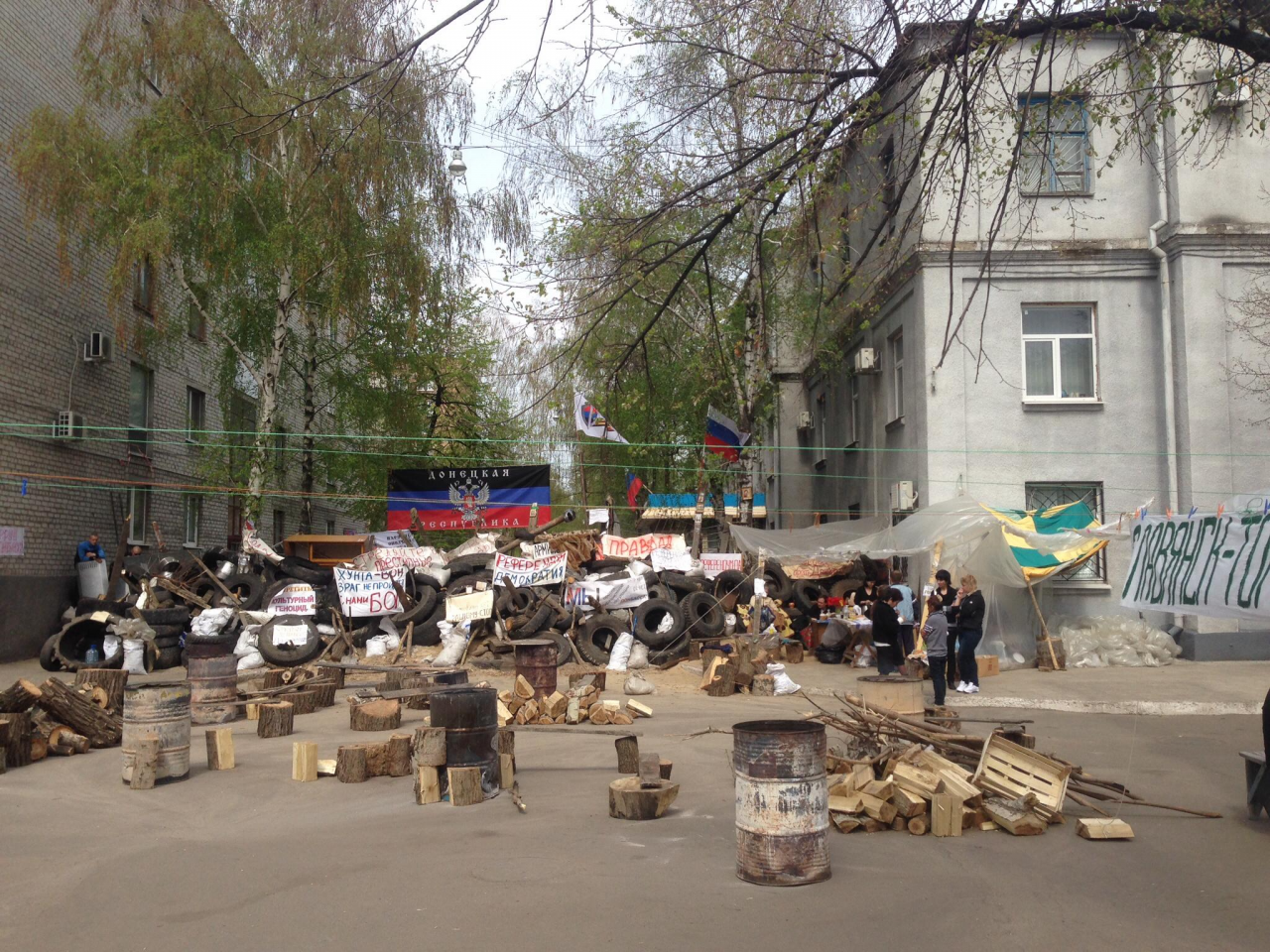
by Tetiana Perepelytsia, Intern
Ilko Kucheriv «Democratic Initiatives» Foundation
On March 12, 2020, according to the Resolution of the Cabinet of Ministers of Ukraine, studies at all educational institutions in Ukraine were transferred online as the result of the COVID-19 pandemic. Obviously, at the beginning of the pandemic, the methodology of distance learning was incomprehensible to both the teachers and the students, which resulted in the latter suffering from the quality of acquired knowledge. Because of that kindergartens, schools, and colleges sometimes temporarily went back to in-person education. Later, due to the worsening of the epidemiological situation, they, again and again, closed the physical and opened their virtual doors to knowledge. Although since 2013, in Ukraine there exists legislation that establishes the standards for distance learning (as a separate form of education), very few educators were ready to introduce such a form of training.
However, while the coronavirus pandemic remains an acute problem for the world, in Ukraine the war has certainly surpassed it in severity and now serves as the primary impediment to continuing education as normal. From the beginning of the Russian invasion, distance learning has become the only available option, and universities are now trying to adapt the knowledge they gained from the times of the pandemic. Now, when Ukrainians are forced to study online because of the war, the logical question comes up, “What are the main advantages and disadvantages of online learning in Ukraine, and how do those affect education in the time of war?” This article is based upon the existing reports, surveys, and theoretical findings on the topic of online learning in Ukraine and the world. These allow us to identify the strengths and weaknesses of distance education, and related threats in order to further present the training and development recommendations for the application of certain online learning techniques during the war and peaceful times in Ukraine.
Research methodology: Theoretical findings and universities’ publications were put in a SWOT framework and divided into two PEST-approach factors. In particular, these are the socio-cultural and technological factors as both are the most closely related to the organization of the educational process.
SWOT analysis comes as a diagram to analyze the cases where all of the elements that comprise the situation are divided into strengths and weaknesses (mostly seen within the organization), as well as threats and opportunities (mainly visible in external communication). PEST analysis results in a further division of case elements by political, economic, socio-cultural, and technological factors.
Besides, while selecting source material it was found that a massive analysis of COVID’s impact on education has mostly been done by the universities from among the Ukrainian top 20 (according to Osvita.UA Portal). Therefore, for the purpose of illustrating the individual cases within the analysis, these publications were used, as well as the latest survey by the State Service of Education Quality of Ukraine as an empirical element of this research (survey conducted from April 12 to 20, 2021 among the students, pedagogical and scientific workers, as well as junior undergraduate professionals [comparable to community college degree]).
You can also browse this article interactively:
SOCIO-CULTURAL FACTOR
Strengths
A combination of work and learning: more practice during the study
In addition to the obvious online learning benefits for students and teachers, such as spending less time on commuting, or an increase in free time, the unconditional advantage is that students now have more opportunities to combine work and studies, and thus simultaneously receive practical knowledge while learning theory at the university. And if at the beginning of the pandemic, almost two-thirds of the students wanted to return to full-time studies, by the second year (before the beginning of the war) the situation has changed drastically. The results of the survey by the State Service of Education Quality show that almost half of the survey participants (49.5%) believe that after the quarantine measures have been lifted, the education process should return to pre-pandemic normal (this indicator has decreased by 20% in comparison to the previous study); while the online mode is now preferred by 8% of the respondents (a two-time increase compared to the 2020 survey [State Service of Education Quality of Ukraine, 2021]).
Expansion of social networks
Due to accessibility of the online learning, it is now easier to expand one’s social boundaries and networks among the students and educators. However, these boundaries exist only within a new social space (meaning online), which might be rather unusual for most. Therefore, such new acquaintances may not be perceived as close as those that were formed in the ‘offline’ world. Besides, students are now more likely to participate in academic mobility (for example, this fact is reflected in the poll results by Volyn National University, where 43.2% of respondents have done so (Lesya Ukrainka Volyn National University, 2021).
A field of opportunities for educators
The previous points are closely linked to opportunities for educators. Educators now have more opportunities than ever to apply novel teaching techniques to make their subjects more engaging. For example, the strength of such a learning format is the ability to invite guest lecturers, as well as to gain knowledge from the advanced online training. Basically, the teachers have gained the access to these new opportunities through new technological resources. In addition, in times of war, many educational institutions have provided access to online-learning platforms (for example, Coursera, EdX, etc.), which greatly simplifies the work of a lecturer and increases the availability of information and time comfort for a student.
Weaknesses
Limited in-person social contacts
An obvious disadvantage of distance learning is the limited amount of live communication, which affects studies both for teachers and students. Besides, the mediator variables of this connection are the deteriorated mental health and the loss of motivation. Many participants in the educational process are now having difficulties adapting to the new rules. It is important to take into account, that universities were a place that united the community, and facilitated socialization like meeting new acquaintances and maintaining the old ones. Currently, the university as a social unit of students and teachers exists only nominally. Its role as a place of social stability and exchange, where individuals from different cities and even countries can communicate together, and maintain a network of connections, has become difficult to preserve. Because of this, the corporate culture of the university, which is an important element of socialization for freshmen and students as a whole, is suffering. The sense of unity and community is largely formed by transferring traditions, customs, and knowledge of the community from one generation to another. Due to quarantine restrictions, such processes occur online, which in turn radically changes the shape and the sense of those elements of culture. In addition, it is psychologically difficult for students and teachers not to see other participants in the educational process in person, which reduces the effectiveness of communication. These conclusions are confirmed by the results of surveys: almost 60% of the Dnipro Polytechnic students indicate that the main disadvantage of online learning is the lack of eye-to-eye communication between the teacher and the student (Dnipro University of Technology, 2020), and 27% of Volyn National University students note that main disadvantage of online learning is lack of a sense of belonging to the student group (Lesya Ukrainka Volyn National University, 2021).
Less active student participation
According to survey results, almost all universities reviewed in this paper consider lackluster student participation to be one of the biggest challenges for teachers. And, if before the COVID pandemic the silence in the classroom partly meant that students were not prepared, or, on the contrary, were in the process of thinking about the task that the teacher gave, now it can mean an actual absence of a student (although they are still nominally shown as participating online). In addition, if students do turn on the camera to show their presence, their appearance and the surroundings may not contribute to the creation of an educational environment. Thus, teachers lose motivation for creating interesting classes, which, combined with the technical complexities that partly arise in these group sessions, make the educational process problematic for both sides.
Readiness to study
The psychological state, as well as the physical ability to continue learning, are significant impediments. Currently, many Ukrainian students and teachers are involved in volunteering, working, or are in the ranks of Territorial Defense Forces or other units of the Armed Forces of Ukraine, so they are not able to dedicate as much time to study as they did before the war. In addition, a particularly relevant issue is the graduation of bachelor's and master's students, who will require a special procedure this year.
Opportunities
Growth in online degrees
As already stated above, Ukraine has already implemented legal groundwork (Ministry of Education and Science of Ukraine, 2013) for remote and/or online education as a separate form of skill validation (in addition to the usual full-time and extramural learning options). After more than two years of the COVID-19 pandemic, the mechanisms for cooperation between teachers and students in the educational process have become more established. Moreover, the technical side has been refined, which allows for the introduction of a corresponding form of education as a full-fledged alternative to full-time studies. If implemented, students will have little need to visit the university in person, and only a fraction of new lecturers will have to be invited. As a result, the amount of state funding reserved for the universities will increase due to the rise in the number of students.
Cooperation
Thanks to the accessibility of online venues (e.g. ZOOM, Microsoft Teams, Skype, etc.), the amount of interaction between universities can potentially expand. This could lead to improvement in communication between the educational institutions. Thus, university applicants will have an easier time choosing which place suits them the most, and students and teachers from various backgrounds will be able to share experiences, facilitate cultural exchange, and receive atypical education and practice. Potentially, this kind of cooperation could help in creating a shared informational space and a single cohesive network of ties. In addition, access to online learning platforms could expand the ability of Ukrainian universities to provide education internationally.
An alternative to extramural studies
A large number of students in Ukraine study full-time (judging by the overall number of students licensed by the government). Considering that currently, remote learning can duplicate offline education just in an online format, it is possible to develop strategies to implement online learning as a separate alternative to an extramural form of training, a form of education popular among those, who want to work and simultaneously receive high-quality education (in practice, extramural education in Ukraine means a mode with a number of dedicated short and accelerated periods of lectures and examinations that one has to complete throughout the study to receive a degree instead of the day-to-day attendance). However, this can take place only if the level of technical knowledge and skills of teachers and students are maintained at the same level or receive an increase. It is also important to consider the peculiarities of the specialties that will be included in such a form of study. For example, many students, especially from among the creatives or natural sciences like biology, chemistry, and medicine, according to the State Service of Education Quality survey, require eye-to-eye contact with the teacher (State Service of Education Quality of Ukraine, 2021). Potentially such a new form of training will enable more students to combine work with education.
Threats
Instability of learning conditions
Currently, many Ukrainians suffer from unstable individual living conditions that may affect education, first caused by the pandemic, and that got significantly worse for many because of the war. Universities have almost no possibility to determine a clear plan because there are many aspects that need to be taken into account when planning further training, and external conditions are certainly not favorable to facilitate the educational process. A permanent “powder keg” state results in the deterioration of the mental health of both teachers and students, so the general motivation for learning and teaching falls drastically.
A threat to health and being
As mentioned above in the Weaknesses section, the reduction of in-person contact has already led to the worsening of the mental health of people providing and receiving education during the pandemic. In times of war, the psychological health of Ukrainians is constantly being challenged. In addition, there both issues bring a credible threat to the lives of students and teachers making human security, overall welfare, and wellbeing a major aspect. The quality of education has now become a secondary problem. Subsequently, once education returns to the usual offline format, it will be necessary to provide psychological assistance to teachers and students, and their psychological and physical conditions will have to be evaluated by the professionals.
The diminishing value
The so-called ‘forced’ online education is also worth considering as a potential threat to the integrity of the educational system. Former high schoolers, who have already been educated remotely, now cannot fully experience student life and their future remains unknown. This year, the university acceptance process has been changed, so there is a possibility, that students will have to postpone their education at the Ukrainian universities for subsequent years or (more likely) try to apply to universities abroad. The disadvantages of remote education, which manifested during the pandemic, make this mode unattractive to young people. Besides, the absence of education reform and the presence of old, USSR approaches to teaching, destroys young people’s motivation who then pursue their studies as a means to receive a degree or to simply meet the desire of their parents (currently, about 7% of students around the world have indicated this to be the case [Chegg.org, 2021]).
TECHNOLOGICAL FACTOR
Strengths
Hardware and software modernization
Apart from the harm, the pandemic has brought some benefits. As universities have begun to purchase a new more powerful equipment capable of withstanding the workload associated with the new needs of educators. Many universities have also introduced unified platforms (partly based on Moodle) and learning tools (so-called LMS – learning management system), which simplify the learning process. To achieve this, the universities mainly follow the recommendations on the organization and control of education made by the Ministry of Education and Science (Ministry of Education and Science of Ukraine, 2020c). For example, almost every expert who took part in the Kharkiv Oblast (Region) Experience Survey confirms, that they now use new or modernized training platforms. Teachers and staff are also actively using the so-called asynchronous communication tools (Zoom, Microsoft Teams, Skype, and the like) to meet their own work needs (Kharkiv National University of Radio Electronics, 2021). The use of similar systems is confirmed by regulations present in other educational institutions (e.g. NaUKMA, KNU, KPI, NULES) (National University of Kyiv-Mohyla Academy, 2022; Kyiv National Taras Shevchenko University, 2022; National Technical University of Ukraine “Igor Sikorsky Kyiv Polytechnic Institute”, 2022; National University of Life and Environmental Sciences of Ukraine, 2022).
The new way and inclusiveness
Thanks to the new technical solutions, students and teachers now have more opportunities for interactivity to acquire and transfer knowledge. According to MES statistics, education is becoming more inclusive and accessible for many categories of Ukrainians due to its remote nature (on average, education became 5 times more accessible in 2020-2021 when compared to 2016-2017) (Ministry of Education and Science of Ukraine, 2022).
Digitization
Remote education contributes to the step-by-step digitalization of education. Now, the exchange of information is contained within centralized portals and the completed task tracking or lecture recordings are always available on university servers. Digitization makes it easier to track plagiarism (especially in texts), which creates an open and honest environment for knowledge sharing and potentially encourages reduce of corruption, and makes learning more environmentally friendly (instead of piles of paper almost all participants use electronic media). Although it is certainly easier to write or copy someone's work (more considerations addressing this issue can be found in the Weaknesses subsection), it is also easier for the teacher to learn about the fact of cheating.
Weaknesses
Imperfect access to technical means
Obviously, not all teachers and students have the technical capacity for distance learning (powerful computers, stable Internet connection, etc.). In addition, there are problems with the servers themselves, as well as technical limitations related to external factors. For example, the license for the popular conferencing service Zoom may be costly to some institutions or individual lecturers, and the use of the ‘free’ version limits group sessions to 40 minutes only, which ruins the integrity of the learning process. However, it should be noted that the technical means do not always depend on the teachers and students themselves, but instead come bundled with the financing of the universities (which is an especially acute topic during the war). You can read more about this shortcoming in the “Threats” subsection.
Lack of training to use technology
If the younger generation was practically “born” with gadgets in their hands, the older generation is very lacking in training to utilize distance learning. This has been noted by both teachers and experts in the survey by the State Service of Education Quality. The professionals noted that among the main problems of remote education are the mediocre level of digital literacy and skills in information and computer technology (State Service of Education Quality of Ukraine, 2021). Although the technology in question has already seen widespread usage in education for more than two years, increasing the mastery of the tools available is an urgent need.
Academic dishonesty and quality of education
A notable Achilles' heel of remote education is students’ academic dishonesty. A team of experts from Ukraine's leading universities assembled by the Ministry of Education and Science developed guidelines based on the precedents of academic dishonesty where they outlined the methodology to prevent dishonesty. These tools include the software and hardware that enables test completion only at a particular site, answer randomization for multiple-choice questions, or even randomization of their composition, hence making it difficult to find answers in books (done so to develop analytical and critical thinking), diversification of task formats. This comes in a bundle with facilitating corporate culture at universities, which is built around academic honesty and intolerance of plagiarism (Ministry of Education and Science of Ukraine, 2020b). Another weakness is the overall ability to provide high-quality education, especially in wartime. Currently, the learning environment has been simplified as much as possible, so it is almost impossible to study certain topics in depth.
Opportunities
A separate form of education
Both in the socio-cultural and the technical sense, Ukrainian society is gradually becoming ready for online learning as a separate education option, especially when it comes to specific programs. After the pandemic, this kind of education can be maintained as distance learning platforms and technical support remain a responsibility of the universities. It is important to organize digital literacy training for all educators and to maintain or improve the current level of material and technical support. For example, learning can be made more interactive by implementing virtual reality and other technical innovations.
Cooperation with foreign universities and sponsors
Thanks to the emergence of cutting-edge technologies for education in general, there exists now an opportunity to facilitate further interaction between various universities. For example, it is now much easier to perform student mobility, organize joint study sessions, and exchange experiences. At the same time, the required hardware and software products can be attained through sponsors or fundraising. This way Ukraine can move closer to a comprehensive system of education with a foreign approach and high quality, which in turn will help future professionals in the international labor market.
Attracting future students
It is an undeniable fact, that in Ukraine during the admission campaign universities struggle to attract applicants and their parents. Universities compete actively in order to interest this category of the population and boasting about modern hardware and software capabilities would make the decision-making process easier. Thus, by working with applicants via online platforms (for example, during the Doors Open Day, open lectures, or Student Day events), universities have the ability to pick students’ interests in higher education at a particular educational institution. Such an approach to entrants will also show them that in Ukraine there exists a quality alternative to studying abroad.
Threats
Lack of funding
Funding for the public universities in Ukraine is provided at the beginning of the school year, and it does not cover the current need for equipment. In addition to the need to purchase sufficiently powerful computers and to pay for on-campus internet for those teachers, who conduct classes from there, the license cost for online conferencing software and salaries for new teachers or additional allowances should also be included. Besides, the cost of servers themselves and their maintenance should be considered an important investment because of the massive influx of users they have to serve. Now the educational institutions that suffered the most because of the war should receive priority funding.
External attacks
While studying online, pranksters sometimes broke into Zoom conferences disrupting the classes to make viral videos for social media. At first glance, these innocent jokes seriously undermined the learning process, turning well-planned lessons into stressful situations for teachers. The same took place in student chat rooms, which undermined their trust in each other. In addition, no university is protected from fishing attacks that target confidential information hosted on their servers. As an example, some universities in Kharkiv Oblast (Region) reported in a survey that their servers were in need of an upgrade (in particular, an increase in RAM capacity) and protection from hacker attacks, which both would require equipment and more financial resources (Kharkiv National University of Radio Electronics, 2021). If such situations are not prevented and/or analyzed, they will possibly have a serious impact on the learning process.
A vicious cycle of technology upgrades
As already mentioned in other subparagraphs, with the beginning of the pandemic the universities entered a process of updating their equipment. Of course, every educational institution needs to update its teaching capacity from time to time, but during the times of remote learning, the need for constant upgrades required to satisfy demand became more urgent (e.g. in software or memory capacity). To provide this kind of service, educational institutions have to turn to sources of external funding.
To sum up, at the beginning of the pandemic in 2020, it was difficult for educators to get used to a new way of learning. Gradually, the situation has significantly improved thanks to the recommendations by the Ministry of Education and Science, self-developed approaches to education, and the general adaptation of all the participants to the new reality. Most negative aspects of compulsory online education have to do with the reduction of social contacts, the disruption of the usual relationship between the student and the teacher, and the lack of digital literacy, all of which lead to a decrease in motivation for both sides. The overall level of satisfaction with remote learning in the spring of 2021 has generally increased, which may indicate gradual habituation to such a lifestyle and management of problems that have sprawled up at the beginning of the pandemic.
However, with the onset of war in Ukraine, the number of weaknesses and threats posed by remote learning has increased. In particular, many learners are not psychologically and physically ready to continue their studies. In addition, some students and teachers do not have the necessary domestic conditions to conduct classes (stable Internet connection, powerful computers, a separate room, etc.). The positive aspects identified in the analysis of distance learning make it possible to develop recommendations for a more effective renewal of the educational process even in wartime and the integration of distance learning as a separate form of education in peacetime:
To attract more participants during wartime, the training sessions can be conducted asynchronously
The curriculum can be more easily adapted to individual needs, based on readiness and ability to continue studies during the war
Psychological assistance should be provided to all educators and learners (for example, initiated by the university); a mechanism for reintegration should be developed
To increase student involvement in the learning process more classes should involve interactive elements available in the virtual space
To ensure academic integrity, training covering digital literacy and the use of equipment for educators should be developed
Universities should seek sponsors to finance their technical needs
Universities should establish and participate in virtual communication networks with their international counterparts to exchange experience
A plan should be developed to introduce online learning as a separate form of education rather than as a temporary alternative to full-time or extramural education (taking into account previous experience and opinions of all educators and learners).
References:
Chegg.org (2021). Global Student Survey. https://www.chegg.org/global-student-survey-2021
Dnipro University of Technology (2020). Результати соціологічного дослідження «Думка студентів і аспірантів щодо дистанційної форми навчання» [Results of the sociological research “Opinion of undergraduate and graduate students on distance learning”]. https://cutt.ly/eFbdEJu
Kharkiv National University of Radio Electronics (2021). Аналіз досвіду ЗВО Харківської області щодо використання дистанційних форм навчання та визначення шляхів впровадження змішаного навчання [Analysis of the experience of the Kharkiv Oblast (Region) universities in the use of distance learning and identification of ways to implement blended learning]. https://nure.ua/wp-content/uploads/Benchmarking/analiz-dosvidu-zvo-harkivskoi-oblasti-shhodo-vikoristannja-distancijnih-form-navchannja-ta-viznachennja-shljahiv-vprovadzhennja-zmishanogo-navchannja-u-2020-2021-n-1.pdf
Kyiv National Taras Shevchenko University (2022). Про особливості організації освітнього процесу у ІІ семестрі 2020-2021 навчального року [About the peculiarities of the organization of the educational process in the second semester of 2020-2021 academic year]. http://www.univ.kiev.ua/news/11413
Lesya Ukrainka Volyn National University (2021). Дистанційна освіта: реальний стан, виклики та перспективи [Distance education: real situation, challenges and prospects]. https://vnu.edu.ua/uk/news/navchannya/distanciyna-osvita-realniy-stan-vikliki-ta-perspektivi
Ministry of Education and Science of Ukraine (2020a). Лист Міністерства освіти і науки №1/9-154 [Letter of the Ministry of Education and Science №1 / 9-154]. https://mon.gov.ua/storage/app/media/news/%D0%9D%D0%BE%D0%B2%D0%B8%D0%BD%D0%B8/2020/03/11/1_9-154.pdf
Ministry of Education and Science of Ukraine (2020b). Рекомендації щодо впровадження змішаного навчання у закладах фахової передвищої та вищої освіти [Recommendations for the implementation of blended learning in institutions of professional higher and higher education]. https://mon.gov.ua/storage/app/media/vishcha-osvita/2020/zmyshene%20navchanny/zmishanenavchannia-bookletspreads-2.pdf
Ministry of Education and Science of Ukraine (2020c). Рекомендації щодо організації поточного, семестрового контролю та атестації здобувачів освіти із застосуванням дистанційних технологій [Recommendations for the organization of current, semester control and certification of students with the use of distance technologies] https://mon.gov.ua/storage/app/uploads/public/5eb/d47/497/5ebd47497d41e067624981.pdf
Ministry of Education and Science of Ukraine (2022). Статистичні дані (інклюзивне навчання) [Statistics (inclusive education)].https://mon.gov.ua/ua/osvita/inklyuzivne-navchannya/statistichni-dani
National Technical University of Ukraine “Igor Sikorsky Kyiv Polytechnic Institute” (2022). Дистанційне навчання у КПІ: відповіді на важливі питання [Distance learning at KPI: answers to important questions]. https://kpi.ua/node/17973
National University of Kyiv-Mohyla Academy (2022). Положення про дистанційне навчання в Національному університеті «Києво-Могилянська академія» [Regulations on distance learning at the National University of Kyiv-Mohyla Academy]. https://www.ukma.edu.ua/index.php/about-us/sogodennya/dokumenty-naukma/doc_view/821-polozhennia-pro-dystantsiine-navchannia-u-naukma (retrieved in February 2022)
National University of Life and Environmental Sciences of Ukraine (2022). Дистанційне навчання у закладах вищої освіти: ризики та перспективи розвитку [Distance learning in higher education institutions: risks and prospects for development]. https://nubip.edu.ua/node/100736
State Service of Quality of Education of Ukraine (2021). Всеукраїнське опитування щодо тенденцій організації дистанційного навчання у закладах освіти в умовах карантину у 2 семестрі 2020/2021 навчального року [All-Ukrainian survey on trends in the organization of distance learning in educational institutions in quarantine in the 2nd semester of 2020/2021 academic year]. https://new.sqe.gov.ua/wp-content/uploads/2021/07/ANALITICHNA-DOVIDKA_vesna_2021-1.docx
Оsvita.UA (2021). Рейтинг вишів «ТОП-200 Україна 2021» [Rating of universities “TOP-200 Ukraine 2021”]. https://osvita.ua/vnz/rating/82821/
Про затвердження Положення про дистанційне навчання [On approval of the Regulation on distance learning] (2013). Ministry of Education and Science of Ukraine. https://zakon.rada.gov.ua/laws/show/z0703-13#Text








